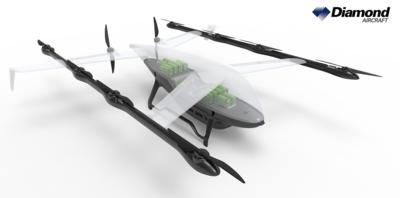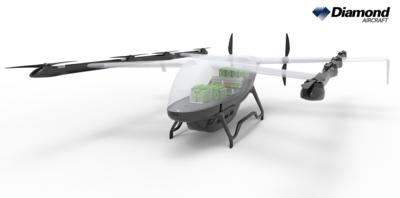Thu, May 01, 2025
Gaseous Hydrogen May Not Be As Cool as Liquid, But it’s Got Potential
Diamond Aircraft has announced a project hybrid aviation powertrains, entering into a “pathbreaking Austrian Research Promotion Agency funded project to advance gaseous hydrogen’s potential as a fuel source in General Aviation.”

The end result will be the ‘H2EDT’ (Hydrogen-based Twin-engine Electrification and Digitalization Testbed). The brand is excited about the possibilities of gas hydrogen tech, given its obvious environmental benefits. If used to its full potential, a hydrogen system produces no greenhouse gas emissions, while bottling up energy from other alternative and renewable forms of power generation. Diamond may seem a little behind the curve to keep working on gaseous hydrogen, given the current trend in the market, but they appear to feel pretty confident they can make the numbers hash out just fine. Gases are inevitably a lower-density form of energy compared to liquids, but the added complexity of maintaining hydrogen in liquid form in a lightweight GA aircraft may not be worth the trouble.
Diamond thinks they can tackle the energy issue by adding in a bank of electric batteries to help cover up the hydrogen system’s weaknesses. A full hydrogen gas powertrain would be “too heavy to cover peak power demands”, while adding additional problems thanks the volume needed for a full flight. Keeping that H2 gas nice and cold, in addition to crash-safe writes a whole lot of engineering checks a small GA airframe just can’t cash. The provision of energy dense batteries would help to cover the need for peak power during takeoff and climb, with fallback generation recharging them off the hydrogen system in cruise. Originally, Diamond planned to make a testbed using a typical twin-engine aircraft, much like their DA42. Ultimately, given the fervor surrounding Advanced Air Mobility, the firm decided to jump into the future with both feet, making it a VTOL with “up to 10 motors”.

If successful, Diamond says they just might do a follow-up hydrogen project on a full-size demonstrator using a DA40 or DA42. Having a standard aircraft in the pipeline would allow them to work out what kind of certification and design guidelines a full, follow-on hydrogen hybrid aircraft would have. But, all that lies on the other side of a finished H2EDT VTOL aircraft. So far, the brand has digitally mocked up a demonstrator using a half-scale CS-23 VTOL aircraft, so there’s plenty more to do.
More News
Aero Linx: Aviators Code Initiative (ACI) Innovative tools advancing aviation safety and offering a vision of excellence for aviators. The ACI materials are for use by aviation pra>[...]
Make Sure You NEVER Miss A New Story From Aero-News Network Do you ever feel like you never see posts from a certain person or page on Facebook or Instagram? Here’s how you c>[...]
From 2016 (YouTube Edition): Who You Gonna Call When You Have a Rocket Engine that Needs a Spacecraft? While at EAA AirVenture 2016, ANN CEO and Editor-In-Chief, Jim Campbell, sat >[...]
"In my opinion, if this isn't an excessive fine, I don't know what is... The odds are good that we're gonna be seeking review in the United States Supreme Court. So we gotta muster>[...]
Expedite Used by ATC when prompt compliance is required to avoid the development of an imminent situation. Expedite climb/descent normally indicates to a pilot that the approximate>[...]
 ANN's Daily Aero-Linx (04.30.25)
ANN's Daily Aero-Linx (04.30.25) ANN FAQ: Turn On Post Notifications
ANN FAQ: Turn On Post Notifications Classic Aero-TV: Agile Aeros Jeff Greason--Disruptive Aerospace Innovations
Classic Aero-TV: Agile Aeros Jeff Greason--Disruptive Aerospace Innovations Aero-News: Quote of the Day (04.30.25)
Aero-News: Quote of the Day (04.30.25) ANN's Daily Aero-Term (04.30.25): Expedite
ANN's Daily Aero-Term (04.30.25): Expedite




